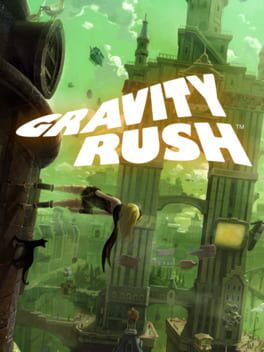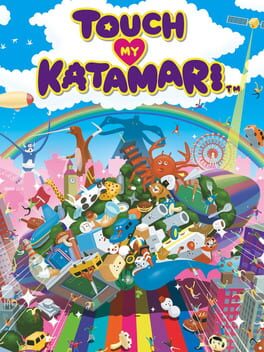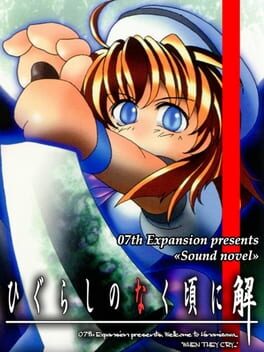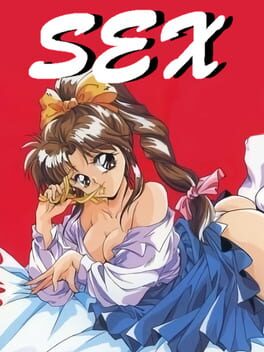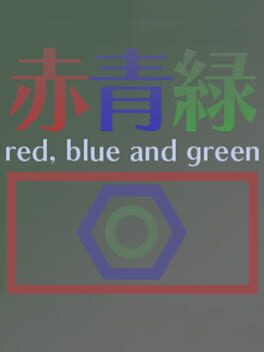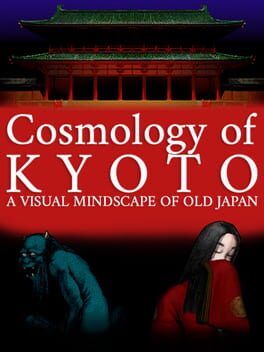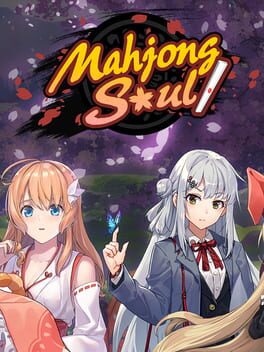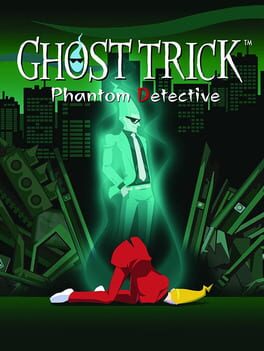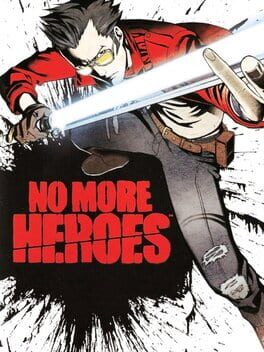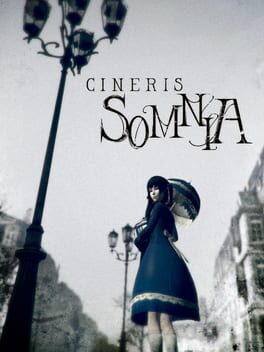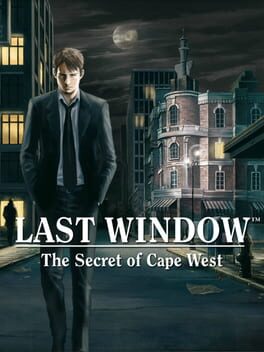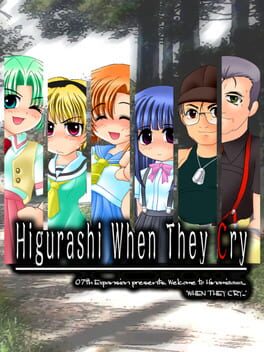PKD2
2012
2011
Devil May Cry 2: Grasshopper Manufacture edition.
Though I do not particularly enjoy doing this, for this review I will primarily be comparing this game to other titles. I believe this game doesn’t really form its own distinct identity outside of “The Sequel of No Mo Heroes” and as a result it’s really difficult to talk about it as though it were an independent work that stands on its own.
No More Heroes, like many SUDA51 games, is an incredibly multi-faceted work with brilliant commentary on a wide range of topics relating to video games and human life, but No More Heroes 2 lacks any of this clever writing and game design that has made Grasshopper Manufacture such an endearing company up until this time. It makes sense since SUDA51 did not serve as director and his role of writer is somewhat ambiguous as well for this game, and it shows.
In my review of No More Heroes, I specifically focused on the game’s commentary on the repetitive nature of video games and how it uses an intentionally poorly structured game loop to highlight this repetitiveness among other things. This structure is completely changed in this game. Now, you are able to directly go into the rank battles one after another without having to pay the ranking fee. The side jobs are still present in the game, but are completely optional. The annoying unfun side jobs of the original which mirror jobs in real life have been replaced by much funner 8-bit style arcade games. What these changes do is make the game much better paced and better structured from a gameplay perspective, but ruins some of the artistic goals of the original.
This wouldn’t be a problem if the game made up for it with its own ideas and themes, but it does not. This is why I say that this game has no separate identity outside of simply being the sequel of No More Heroes. Its primary theme, revenge and the cycle of violence, is something already present in the original. It is just far less subtle in this game. All the humor, the characters, and the tone of the original is preserved and dumped directly into this one as well. In fact, in some ways this game is even a flanderization of No More Heroes. The sexuality has gone waaay up and so has the general ridiculousness. This game WILL make you look at Sylvia’s breasts and even if you avoid one cutscene with a zoom up on them it will eventually catch you slacking.
Even the core narrative of this game is, frankly, a rehash of the original that lacks any of the deliberate commentary of the original. No More Heroes 2 copies No More Heroes whenever it can and makes reckless changes without really thinking very hard for why the original is designed the way it is. This is why at the top of this critique, I compared this game to Devil May Cry 2. They are actually decently similar games in many ways. Both lack the director of the original game they’re a sequel to, both are far more ridiculous than the original in their events (DMC2 has demon tanks and helicopters and this game has mech battles and weird giant batman parody babies), both are pretty pointless sequels, and both completely misunderstand what made the original good in the first place.
Now of course, DMC2 and this game is not a 1 to 1 comparison. No More Heroes 2 is far better than DMC2 and succeeds in many of the aspects the latter fails, and I honestly might be stretching a lot with this comparison, however I feel like they fall into similar pitfalls.
Despite all of this, I still reasonably enjoyed my time with this game. Even if it does not quite have the wit of the original, it most certainly has its charm, and that may be enough for me. The gameplay is still extremely button mashy but so much fun, Travis is still a loveable jackass, and you’re still able to play with Jeane the cat though she’s gained a bit of weight. Most of the things I enjoyed about this game were already in the original, however. Still, 3 whole extra stars to this game for making playing with Jeane more interactive. Very excited to see what SUDA51 does with her in NMH3!
Though I do not particularly enjoy doing this, for this review I will primarily be comparing this game to other titles. I believe this game doesn’t really form its own distinct identity outside of “The Sequel of No Mo Heroes” and as a result it’s really difficult to talk about it as though it were an independent work that stands on its own.
No More Heroes, like many SUDA51 games, is an incredibly multi-faceted work with brilliant commentary on a wide range of topics relating to video games and human life, but No More Heroes 2 lacks any of this clever writing and game design that has made Grasshopper Manufacture such an endearing company up until this time. It makes sense since SUDA51 did not serve as director and his role of writer is somewhat ambiguous as well for this game, and it shows.
In my review of No More Heroes, I specifically focused on the game’s commentary on the repetitive nature of video games and how it uses an intentionally poorly structured game loop to highlight this repetitiveness among other things. This structure is completely changed in this game. Now, you are able to directly go into the rank battles one after another without having to pay the ranking fee. The side jobs are still present in the game, but are completely optional. The annoying unfun side jobs of the original which mirror jobs in real life have been replaced by much funner 8-bit style arcade games. What these changes do is make the game much better paced and better structured from a gameplay perspective, but ruins some of the artistic goals of the original.
This wouldn’t be a problem if the game made up for it with its own ideas and themes, but it does not. This is why I say that this game has no separate identity outside of simply being the sequel of No More Heroes. Its primary theme, revenge and the cycle of violence, is something already present in the original. It is just far less subtle in this game. All the humor, the characters, and the tone of the original is preserved and dumped directly into this one as well. In fact, in some ways this game is even a flanderization of No More Heroes. The sexuality has gone waaay up and so has the general ridiculousness. This game WILL make you look at Sylvia’s breasts and even if you avoid one cutscene with a zoom up on them it will eventually catch you slacking.
Even the core narrative of this game is, frankly, a rehash of the original that lacks any of the deliberate commentary of the original. No More Heroes 2 copies No More Heroes whenever it can and makes reckless changes without really thinking very hard for why the original is designed the way it is. This is why at the top of this critique, I compared this game to Devil May Cry 2. They are actually decently similar games in many ways. Both lack the director of the original game they’re a sequel to, both are far more ridiculous than the original in their events (DMC2 has demon tanks and helicopters and this game has mech battles and weird giant batman parody babies), both are pretty pointless sequels, and both completely misunderstand what made the original good in the first place.
Now of course, DMC2 and this game is not a 1 to 1 comparison. No More Heroes 2 is far better than DMC2 and succeeds in many of the aspects the latter fails, and I honestly might be stretching a lot with this comparison, however I feel like they fall into similar pitfalls.
Despite all of this, I still reasonably enjoyed my time with this game. Even if it does not quite have the wit of the original, it most certainly has its charm, and that may be enough for me. The gameplay is still extremely button mashy but so much fun, Travis is still a loveable jackass, and you’re still able to play with Jeane the cat though she’s gained a bit of weight. Most of the things I enjoyed about this game were already in the original, however. Still, 3 whole extra stars to this game for making playing with Jeane more interactive. Very excited to see what SUDA51 does with her in NMH3!
1995
2019
Didn’t actually play this, I read the manga instead. It’s a short little story based around the 25th Ward with some slight additional lore and a new character. Really not much to write on this one besides that the character interactions are neat, the references to the 25th ward and other Kill The Past games are nice, and that I really dig the artwork.
1993
One of the most interesting PC “games” I’ve ever played.
This title is less of a game and more of an interactive piece of computer software, or as the box puts it, a “visual mindscape”. It takes place in Kyoto at the time of the Japanese Heian period and is deeply rooted in Japanese myth and spiritualism, primarily with Buddhist ideas and concepts.
You start off in a field just outside Kyoto with absolutely nothing to your name. You have no money and are completely naked to boot. Luckily, nearby is the skinny and decomposing corpse of some unfortunate fellow, whom you can steal the clothes of. After looting the corpse, you can make your way to the city gate only to be told off by a stern samurai. You can easily sneak in through a hole in the wall, though.
Now you’re in Kyoto and the world is at your fingertips. There is no indication of where you should go or what to do; you must give yourself the motivation to see what lies in this city.
Kyoto is in a very rough condition during this time. The homeless and the sick line the walls and fences of the city begging for scraps while demons prey on unsuspecting humans and the rich elites vie endlessly with one another for further power. Wandering too far into any section of the city will result in seeing something you’d probably rather want to avoid, or maybe it will happen directly to you instead. This something is obviously a very cruel death.
Should this happen you will be sent to the afterlife and depending on your karma you will be sent to vastly different realms. Karma in this game is determined by what actions you did while you were alive, and if it is negative you are sent to one of the Buddhist realms of hell and torture, and if it is positive you will enjoy a good afterlife.
After your afterlife is complete you will be reincarnated. Even if your karma is negative, you will likely be reborn as a human, but if it falls too low a dog will be decided to be a much more suitable form for you. If you are reincarnated as a human, you will have to steal clothes off of another corpse, that being your own corpse from your previous life.
You might be thinking that death is a total pain that you’d rather want to avoid. There are a number of ways one can die in this game; sickness, food poisoning, assault, etc. but the one most players are going to die to first are demons. Demons roam around in certain sections of Kyoto, and for the unprepared human they mean instant death. The game does give the player a few options to deal with them, however.
You can visit the Buddhist temple and become a monk, learning various scriptures gaining access to scrolls that ward away demons. Even if you choose not to become a monk, the monks there are charitable to give you a one use scroll. If you are not a spiritual person you may head to the bustling marketplace, the most active location in Kyoto. There you can purchase bows and arrows to attack demons from afar. Many demons probably won’t be discouraged from attacking you just because you’re armed though.
Really, I could go on and on with the multitude of events and things one can do. It feels like an open world game but much much smaller with little to no empty space and all of the interesting things in the same location without unnecessarily long travel distances between them. Everything I’ve written about here are things that can be encountered in the first 10 minutes of playing BTW.
So yeah, I thoroughly recommend experiencing this title. It is so expansive and large that it is impossible for any two players to have the same experience, so if you decide to try it please let me know how it was. I also apologize if this review seems a bit rambling as there’s so much I could write about this I become a little overwhelmed and have to limit myself to just the gameplay experience.
I really need to play more of these DOS games
This title is less of a game and more of an interactive piece of computer software, or as the box puts it, a “visual mindscape”. It takes place in Kyoto at the time of the Japanese Heian period and is deeply rooted in Japanese myth and spiritualism, primarily with Buddhist ideas and concepts.
You start off in a field just outside Kyoto with absolutely nothing to your name. You have no money and are completely naked to boot. Luckily, nearby is the skinny and decomposing corpse of some unfortunate fellow, whom you can steal the clothes of. After looting the corpse, you can make your way to the city gate only to be told off by a stern samurai. You can easily sneak in through a hole in the wall, though.
Now you’re in Kyoto and the world is at your fingertips. There is no indication of where you should go or what to do; you must give yourself the motivation to see what lies in this city.
Kyoto is in a very rough condition during this time. The homeless and the sick line the walls and fences of the city begging for scraps while demons prey on unsuspecting humans and the rich elites vie endlessly with one another for further power. Wandering too far into any section of the city will result in seeing something you’d probably rather want to avoid, or maybe it will happen directly to you instead. This something is obviously a very cruel death.
Should this happen you will be sent to the afterlife and depending on your karma you will be sent to vastly different realms. Karma in this game is determined by what actions you did while you were alive, and if it is negative you are sent to one of the Buddhist realms of hell and torture, and if it is positive you will enjoy a good afterlife.
After your afterlife is complete you will be reincarnated. Even if your karma is negative, you will likely be reborn as a human, but if it falls too low a dog will be decided to be a much more suitable form for you. If you are reincarnated as a human, you will have to steal clothes off of another corpse, that being your own corpse from your previous life.
You might be thinking that death is a total pain that you’d rather want to avoid. There are a number of ways one can die in this game; sickness, food poisoning, assault, etc. but the one most players are going to die to first are demons. Demons roam around in certain sections of Kyoto, and for the unprepared human they mean instant death. The game does give the player a few options to deal with them, however.
You can visit the Buddhist temple and become a monk, learning various scriptures gaining access to scrolls that ward away demons. Even if you choose not to become a monk, the monks there are charitable to give you a one use scroll. If you are not a spiritual person you may head to the bustling marketplace, the most active location in Kyoto. There you can purchase bows and arrows to attack demons from afar. Many demons probably won’t be discouraged from attacking you just because you’re armed though.
Really, I could go on and on with the multitude of events and things one can do. It feels like an open world game but much much smaller with little to no empty space and all of the interesting things in the same location without unnecessarily long travel distances between them. Everything I’ve written about here are things that can be encountered in the first 10 minutes of playing BTW.
So yeah, I thoroughly recommend experiencing this title. It is so expansive and large that it is impossible for any two players to have the same experience, so if you decide to try it please let me know how it was. I also apologize if this review seems a bit rambling as there’s so much I could write about this I become a little overwhelmed and have to limit myself to just the gameplay experience.
I really need to play more of these DOS games
2019
2007
Smells like Suda spirit.
This game is loud, crude, in your face, and maybe even a little obnoxious at times but I love it. It almost constantly maintains this super goofy over the top tone, and it never takes itself too seriously, opting to go all in on it’s satire of what I believe to be the entire video game medium.
The gameplay is an often disliked part of this game, but I feel it works incredibly well. In that classic Suda fashion, it chooses to purposefully stray away from something “fun” in favor of using the gameplay thematically. The game follows this super tedious, super linear format of grinding money, paying the United Assassins Association all your hard earned cash in order to set up the next rank fight, play a level to get to the boss, kill the boss, wash rinse and repeat. It isn’t very fun, especially the money gathering.
It seems pretty amateurish to have such a system, but under the lense that the game is a satire, it becomes a bit more meaningful. Think of a solid 80% or more of the games you’ve played and think about their gameplay loops. How much you do this gameplay loop under the runtime of the game. I don’t know about you, but for me I quickly realized that for a lot of these games I’m basically doing the same thing over and over. I just never notice it since these games strive to be fun and that masks the monotony.
By removing the “fun”, No More Heroes gameplay highlights how extremely repetitive so many games are. It laughs and makes fun of them.
Even the combat is like this; both the bosses and you only have a handful of moves and the bosses have A LOT of HP (especially the final boss) so you’re going to be going in cycles of dodging attacks, blocking attacks, counterattacking, and so forth over and over until eventually you or the boss dies. When I fought the final boss for the first time, my hands actually started hurting from how long I had to fight them.
And of course, it’s really impossible to talk about this game without talking about it’s protagonist Travis Touchdown, who is honestly one of my favorite video game protagonists ever. If I met him in real life I’d probably hate the guy, but as a character I love him. Travis perfectly encapsulates both the satiricalness of No More Heroes as well as it’s commentary beautifully.
If the gameplay and its format is satire of video games, then Travis, the one who’s actually rising up the ranks and doing the fighting, would be a satire of us, the players.
When we first see Travis just outside of the intro, he’s easily decapitating some guys and doing cool poses and the like. He seems like the most badass guy ever. Then we see his daily life and find out he lives alone in a motel, has no stable employment, has shelves of anime girl figurines, and his walls are plastered with Mexican wrestling masks (classic Suda).
Frankly, he lives a pretty pathetic life. He’s a very not subtle satiricalization of many video game players and anime fans, some guy who surrounds himself with fiction rather than attempting to improve his life. So when he’s a super cool badass it’s really an illusion masking this patheticness, and it’s really an illusion we would all want to be in reality. We would all want to be the cool guy destroying enemies and saving the princess and all that, and so in order to live out this fantasy we play video games and surround ourselves with fiction, just like Travis.
The game indulges in our fantasy with the rank matches, but after the level is done and the boss is slayed, we are forced to return back to the motel and our real lives. From there the only thing we can do is work and then blow off all our money towards more fantastical fiction…it’s kind of a depressing loop, and one I could easily imagine many people becoming entangled in. Hell, I could end up in that situation to be honest.
But despite some of its more saddening comments on modern consumerism, it still maintains a silly tone throughout. Messing around with Jeane the kitten in the motel, hearing about the ridiculous DVDs Travis rents, driving around town in an uber custom motorbike, it’s such a goofy and lovable title. In order to save the game you have to take a dump in a toilet for Christ's sake.
I haven’t played any other No More Heroes game just yet, but in the near future I’d love to play No More Heroes 2. From what I’ve read online it’s a somewhat less fondly loved game, but if it maintains at least some of the spirit this game has I know I’ll enjoy it, to some extent anyways.
This game is loud, crude, in your face, and maybe even a little obnoxious at times but I love it. It almost constantly maintains this super goofy over the top tone, and it never takes itself too seriously, opting to go all in on it’s satire of what I believe to be the entire video game medium.
The gameplay is an often disliked part of this game, but I feel it works incredibly well. In that classic Suda fashion, it chooses to purposefully stray away from something “fun” in favor of using the gameplay thematically. The game follows this super tedious, super linear format of grinding money, paying the United Assassins Association all your hard earned cash in order to set up the next rank fight, play a level to get to the boss, kill the boss, wash rinse and repeat. It isn’t very fun, especially the money gathering.
It seems pretty amateurish to have such a system, but under the lense that the game is a satire, it becomes a bit more meaningful. Think of a solid 80% or more of the games you’ve played and think about their gameplay loops. How much you do this gameplay loop under the runtime of the game. I don’t know about you, but for me I quickly realized that for a lot of these games I’m basically doing the same thing over and over. I just never notice it since these games strive to be fun and that masks the monotony.
By removing the “fun”, No More Heroes gameplay highlights how extremely repetitive so many games are. It laughs and makes fun of them.
Even the combat is like this; both the bosses and you only have a handful of moves and the bosses have A LOT of HP (especially the final boss) so you’re going to be going in cycles of dodging attacks, blocking attacks, counterattacking, and so forth over and over until eventually you or the boss dies. When I fought the final boss for the first time, my hands actually started hurting from how long I had to fight them.
And of course, it’s really impossible to talk about this game without talking about it’s protagonist Travis Touchdown, who is honestly one of my favorite video game protagonists ever. If I met him in real life I’d probably hate the guy, but as a character I love him. Travis perfectly encapsulates both the satiricalness of No More Heroes as well as it’s commentary beautifully.
If the gameplay and its format is satire of video games, then Travis, the one who’s actually rising up the ranks and doing the fighting, would be a satire of us, the players.
When we first see Travis just outside of the intro, he’s easily decapitating some guys and doing cool poses and the like. He seems like the most badass guy ever. Then we see his daily life and find out he lives alone in a motel, has no stable employment, has shelves of anime girl figurines, and his walls are plastered with Mexican wrestling masks (classic Suda).
Frankly, he lives a pretty pathetic life. He’s a very not subtle satiricalization of many video game players and anime fans, some guy who surrounds himself with fiction rather than attempting to improve his life. So when he’s a super cool badass it’s really an illusion masking this patheticness, and it’s really an illusion we would all want to be in reality. We would all want to be the cool guy destroying enemies and saving the princess and all that, and so in order to live out this fantasy we play video games and surround ourselves with fiction, just like Travis.
The game indulges in our fantasy with the rank matches, but after the level is done and the boss is slayed, we are forced to return back to the motel and our real lives. From there the only thing we can do is work and then blow off all our money towards more fantastical fiction…it’s kind of a depressing loop, and one I could easily imagine many people becoming entangled in. Hell, I could end up in that situation to be honest.
But despite some of its more saddening comments on modern consumerism, it still maintains a silly tone throughout. Messing around with Jeane the kitten in the motel, hearing about the ridiculous DVDs Travis rents, driving around town in an uber custom motorbike, it’s such a goofy and lovable title. In order to save the game you have to take a dump in a toilet for Christ's sake.
I haven’t played any other No More Heroes game just yet, but in the near future I’d love to play No More Heroes 2. From what I’ve read online it’s a somewhat less fondly loved game, but if it maintains at least some of the spirit this game has I know I’ll enjoy it, to some extent anyways.
2016
It’s really about time I threw in the towel on this game. I’ve been playing this title on and off for a little under a year now, and I’d always go long stretches of time just forgetting about this game then being reminded of it’s existence by seeing it on my “playing” tab.
The thing about this game is that it really doesn’t have anything to engage me. There are a variety of things a game can engage me through and this game really has none of them. The cast is fine, none of the characters stood out to me in any way and I really didn’t enjoy them besides a select few story interactions and those skit segments. The villains are incredibly bland and merely serve as motivations for the protagonists rather than as fleshed out individual characters. The art direction is incredibly generic, the locations and world are incredibly standard for JRPGs, the dungeon puzzles are an insult to the word puzzle, I could really go on and on and on with each and every thing in this game.
It sucks too since I know someone who really seems to enjoy this game, but I just can’t get into it in the 20 hours I’ve given it.
The thing about this game is that it really doesn’t have anything to engage me. There are a variety of things a game can engage me through and this game really has none of them. The cast is fine, none of the characters stood out to me in any way and I really didn’t enjoy them besides a select few story interactions and those skit segments. The villains are incredibly bland and merely serve as motivations for the protagonists rather than as fleshed out individual characters. The art direction is incredibly generic, the locations and world are incredibly standard for JRPGs, the dungeon puzzles are an insult to the word puzzle, I could really go on and on and on with each and every thing in this game.
It sucks too since I know someone who really seems to enjoy this game, but I just can’t get into it in the 20 hours I’ve given it.
2018
An incredibly gorgeous and atmospheric title.
This game is essentially a walking simulator disguised as an exploration puzzle game and takes place over the course over several small short stories.
The stories themselves are ok at best, they’re simple and relatively straightforward without much thematic connection or complexity but what I really enjoy this game for is its phenomenal art direction and sound design.
It’s incredibly clear just looking at the game that it did not have the highest budget nor did many people work on it. The models are relatively low quality with stiff animations, and occasionally characters actually start clipping through their clothes and the objects near them in animations. What makes this game a visual treat is really the phenomenal lighting and color palettes utilized in the various chapters. The lighting mostly uses standard fuzzy glows but makes it look particularly beautiful is its contrast against the mostly darker colored environments and player character. Because of the darker areas the lighting glows and pops out more. Sunbeams and moonlight function mostly the same except when interacting with liquids, which start to shine in contact. When combining these aspects you have some visuals I really love; a spiral staircase being illuminated from light above as glowing rose petals fall to the ground; blood positively sparkling under the moonlight reflected by a twilight blue greenhouse; a spotless white sanitorium illuminated from windows to the courtyard, silent bar your footsteps and the chirps of birds outdoors; a forest enveloped in a dark fog illuminated only by the glow of cyan butterflies; the game is full of locations like this and these are only a few of my favorites.
The sound design is also great and adds a fair amount to the experience. The OST is mostly ambient tracks played by the piano and typically has a gentle, occasionally somber feel to it. The sound effects are more pronounced and add a fair amount; the drip-drop of blood falling off a table from an overturned teacup; the bustling of curtains in the wind; the pitter-patter of fish out of water; playing the game without sound would remove so much of it.
So yeah, it’s a pretty neat game. If you care at all about either dark or joyous atmospheres in games without much else substance present, then I think you’d enjoy it.
This game is essentially a walking simulator disguised as an exploration puzzle game and takes place over the course over several small short stories.
The stories themselves are ok at best, they’re simple and relatively straightforward without much thematic connection or complexity but what I really enjoy this game for is its phenomenal art direction and sound design.
It’s incredibly clear just looking at the game that it did not have the highest budget nor did many people work on it. The models are relatively low quality with stiff animations, and occasionally characters actually start clipping through their clothes and the objects near them in animations. What makes this game a visual treat is really the phenomenal lighting and color palettes utilized in the various chapters. The lighting mostly uses standard fuzzy glows but makes it look particularly beautiful is its contrast against the mostly darker colored environments and player character. Because of the darker areas the lighting glows and pops out more. Sunbeams and moonlight function mostly the same except when interacting with liquids, which start to shine in contact. When combining these aspects you have some visuals I really love; a spiral staircase being illuminated from light above as glowing rose petals fall to the ground; blood positively sparkling under the moonlight reflected by a twilight blue greenhouse; a spotless white sanitorium illuminated from windows to the courtyard, silent bar your footsteps and the chirps of birds outdoors; a forest enveloped in a dark fog illuminated only by the glow of cyan butterflies; the game is full of locations like this and these are only a few of my favorites.
The sound design is also great and adds a fair amount to the experience. The OST is mostly ambient tracks played by the piano and typically has a gentle, occasionally somber feel to it. The sound effects are more pronounced and add a fair amount; the drip-drop of blood falling off a table from an overturned teacup; the bustling of curtains in the wind; the pitter-patter of fish out of water; playing the game without sound would remove so much of it.
So yeah, it’s a pretty neat game. If you care at all about either dark or joyous atmospheres in games without much else substance present, then I think you’d enjoy it.
This review will be talking about both Hotel Dusk and Last Window as what makes them such great titles are shared between both of them.
These titles are some of the most grounded and personal works I have ever had the pleasure of going through. By personal, I do not mean something that relates to me specifically, but rather that the ideas and stories of these titles are something applicable to all of our real lives.
In both games there is this mystery that has plagued Kyle Hyde for several years, or even most of his life. Hotel Dusk and Last Window take place late in December of the years 1979 and 1980, respectively and there’s this very unique sense of urgency to solve these cases before the new year begins. At the end of every year, we look back on it, at all of it’s victories and failures, then we hope for a better future, and there’s also a sense to wrap everything from the the year up. These games manifest that sense of urgency into reality. In Hotel Dusk, everyone related to the case you’re investigating is in the same area but wait just one day and at least one will certainly leave and the puzzle will be left unfinished forever. In Last Window, the location of the case you’re investigating this time is going to be demolished in just two weeks, so you must solve the mystery before then and of course before the new year begins.
This very human concept of moving on from the past and the games general realistic setting is backed up by it’s lovable cast. Most of the characters relate to these themes, having these mysteries that have plagued them with expiry dates on the solution, and as you solve the mysteries of these side characters you slowly solve bits and parts of your own. Adding to the realistic feel of the games is the dialogue and character art. The dialogue and writing flows extremely well and naturally, it really does feel like these characters are actual people and the brilliant animations and movements done through rotoscoping makes these characters feel alive all the more.
The music is another aspect adding to this with less technological instruments and rather much more tangible ones befitting of games taking place in the late 70s and early 80s such as saxophones, pianos, drums, and the like.
All in all thoroughly enjoyable titles, I probably could’ve written a better review but it’s 12:30 am, I’m tired, but I also wanted to get my love for these games out there and did not want to wait until the morning!!
obligatory RIP Cing
These titles are some of the most grounded and personal works I have ever had the pleasure of going through. By personal, I do not mean something that relates to me specifically, but rather that the ideas and stories of these titles are something applicable to all of our real lives.
In both games there is this mystery that has plagued Kyle Hyde for several years, or even most of his life. Hotel Dusk and Last Window take place late in December of the years 1979 and 1980, respectively and there’s this very unique sense of urgency to solve these cases before the new year begins. At the end of every year, we look back on it, at all of it’s victories and failures, then we hope for a better future, and there’s also a sense to wrap everything from the the year up. These games manifest that sense of urgency into reality. In Hotel Dusk, everyone related to the case you’re investigating is in the same area but wait just one day and at least one will certainly leave and the puzzle will be left unfinished forever. In Last Window, the location of the case you’re investigating this time is going to be demolished in just two weeks, so you must solve the mystery before then and of course before the new year begins.
This very human concept of moving on from the past and the games general realistic setting is backed up by it’s lovable cast. Most of the characters relate to these themes, having these mysteries that have plagued them with expiry dates on the solution, and as you solve the mysteries of these side characters you slowly solve bits and parts of your own. Adding to the realistic feel of the games is the dialogue and character art. The dialogue and writing flows extremely well and naturally, it really does feel like these characters are actual people and the brilliant animations and movements done through rotoscoping makes these characters feel alive all the more.
The music is another aspect adding to this with less technological instruments and rather much more tangible ones befitting of games taking place in the late 70s and early 80s such as saxophones, pianos, drums, and the like.
All in all thoroughly enjoyable titles, I probably could’ve written a better review but it’s 12:30 am, I’m tired, but I also wanted to get my love for these games out there and did not want to wait until the morning!!
obligatory RIP Cing
Pretty well put together mystery. Each chapter gives slight clues to work with on slowly figuring out some parts of the mystery, but nothing is ever so huge or obvious you can make any deduction with absolutely certainty, and I think that’s the goal mysteries should strive for.
Additionally some of the narratives for the individual chapters are quite middling, with slow pacing particularly in the early to middle portions, but each Question Arc chapter is less about attempting to be their own complete narrative and rather fulfill a specific purpose in the mystery and the overarching narrative of all the chapters.
Also Hello! from the original soundtrack fucks so hard idk why they’d replace it in the steam release…
Additionally some of the narratives for the individual chapters are quite middling, with slow pacing particularly in the early to middle portions, but each Question Arc chapter is less about attempting to be their own complete narrative and rather fulfill a specific purpose in the mystery and the overarching narrative of all the chapters.
Also Hello! from the original soundtrack fucks so hard idk why they’d replace it in the steam release…
